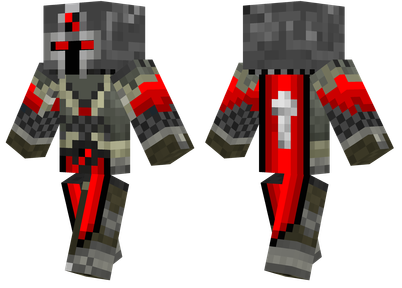(Tutorial use version 1.12.2 but does not affect the content use)
Module of this tutorial: AE2 MEK Integrated Power+Integrated Pipeline Storage (not yet added)
Update date: 2019.9.29
The idea of this tutorial comes from the automation solutions of various big brothers I have seen all year round.
Supplement of the previous issue:
Fake synthesis (can increase backflow type) synthesis: Model terminal processing mode Edit a non -existent synthesis. It is recommended to use the name of the name pressure template to rename the iconic block to create synthesis (the purpose is to achieve a large number/variety of synthesis)
If I want to automatically synthesize the operating processor, logic processor, and 6,400 engine processors, you can use the name to printed template name engineering circuit board as "processor 64" (only convenient to see), and then set the synthesis as follows as follows as follows.picture
In addition, a large -capacity cache area can be added inside the synthesis. In this
Such as: the interface of the model of the model is transported by other MOD transportation speeds of the transportation pipeline to 4 panel box/storage buckets of raw materials, temporarily store a large amount of raw materials, and then automatically extract to the printer for flowing water treatment
// PS: Fake synthesis is that AE is characterized by calling the existing raw materials and insufficient synthesis of raw materials. Therefore, the above 64 synthesis of the above processor is to make the three processors in the network reach 6,400.
As for the return type, that is, the task is not canceled, and the setting of the fake synthetic "product" is thrown into the ME interface manually/automatically to make it "normal" to complete the task.
At present, AE2 does not have a suitable way to easily detect the number of some items in the synthetic synthesis. Even if the sub -network+ME standard sender is used to monitor the internal monitoring, I personally feel that it will be lost.
Cancel it immediately after transmitting the raw material, simple and easy to use.
As for the fake synthetic logo, you can just look at your own preferences. I prefer to use the name -related items to use the name to press the template to rename it. This is convenient and easy to understand.
Some people like to use books (see comments), and they are not impossible, but the icon of the book and most servers disable books and pens.I personally used items such as life names (less easy to get), tie rods, red rocks and other items.
This issue:
Often in the concept and meaning of automation
Commonly used in automation implementation methods
Advanced cases of automation implementation cases
Often in the concept and meaning of automation
The automation is often carried out at the time of automation, and it will start and close according to the dynamic changes of the system (usually reduced consumption and increase the same reason).
It's like a sink. When the water level is insufficient, it can be automatically replenished. When the water level meets the standard, it will automatically stop hydrating, that is, a closed -loop system, and automatically supplement to the demand
It is divided into two parts: autonomous synthesis+quantity control
Autonomous synthesis: that is, it will automatically call the items in the network
Quantity control (key): The number of settings will stop synthesis
2. Several common in automation implementation methods
Autonomous synthesis part:
[...] Indicates that the logistics pipe or a container as a cache area
a. Output bus+[...]+machine (directly output raw materials to the machine synthesis, no need to say)
b. Output bus+internal inserting synthetic card (directly call the molecular assembly position in the network automatic synthesis)
c. Output bus+[...]+molecular assembly position (needed models in the inside) (Compared with the above, the advantages are independent and not easy to be affected)
Quantity control part: (key)
A.ME standard sender+ME trigger bus/ME reverse trigger bus (high requirements for the line and consumption channel) ★★★★
principle:
1. Production control (recommendation): (take stone brush machine as an example)
Standard sender detects the number of items in the network.
The opposite ME trigger the bus trigger in the redstone signal to receive the redstone signal will be disconnected, so the input bus of the box of the brush machine will be disconnected.
That is, the output port of the machine is directly controlled. When the quantity reaches the standard, it is no longer required to be synthesized.
// PS: Not suitable for the synthesis of bombing boxes, such as the automatic processing of the scooter/mineral and the tree field, etc.
2. Enter control: (Take the stones as an example) (I am not lazy to copy and paste! _ (: 3 "∠) _)
Standard sender detects the number of items in the network.
The opposite ME trigger bus trigger in the redstone signal will be disconnected, so the output bus of the filling furnace (or melting furnace) will be disconnected and will not continue to enter the stone to directly control the machine and directly control the machine.When the number of input ports are no longer required, the input port shutdown directly causes the machine's raw materials to stop synthetic.
// PS: This control needs to pay attention to the synthesis of the cache area. This type of synthesis is that the raw material can stay in the automation part during the synthetic opening period. This kind of synthesis cannot be used.
Especially when the cache area is very large (such as the output bus follows a basic box cabinet/storage barrel that can store 64 groups of stones), because when the input stops (no more input stones), the cache area is still in the cache area, and the cache area is still in the cache area.
There is also a huge amount of stones, which will continue to burn a large number of stones after stopping (of course, you can also use this idea to prevent trigger the bus repeatedly switching signals)
b. Container+storage bus type (the simplest but most practical) ★★★★★
Features: Autonomous and autonomous synthesis parts are only unilateral receiving materials. The final raw materials are containers with limited size of non -AE chips.
Construction method: (take the stone brush machine as an example)
System: Brush Machine (Out of Round Stone)> MEK Basic Box Cabinet/Storage Barrel (Assuming a container with 4096 items)> Storage bus to implement AE access
This effect is directly achieved: the stone brush machine continues to produce a cycling cabinet. When the cabinet is full, it is equivalent to blocking the output part and cannot output items.
In the end, the stone will continue to maintain 4096 in the cabinet, which will not exceed this number. Once a lot of consumption, it will automatically replenish this number
Reflux type (often combined with fake synthesis) (this will be demonstrated in the high -level case below)
In addition, the storage bus of the network A follows the arbitrary ME interface of the network B, which can directly access the storage space inside the network, but it cannot access the synthesis of network synthesis model
Including the chip storage of the network B network and the storage of the container of the storage bus (but the storage stuck in the ME interface is still not XD)
General storage bus and ordinary ME interface access the item network, the fluid is accessing the fluid network (can you use the ME controller to test whether the network is directly connected)
Through this method, the channel between the network can be unconnected and the logistics is connected (can be visited one -way, or can be accessed in two -way)
You can visit other networks for other networks for storage/often on automation networks to save channels
3. Advanced case
(1) Revolution fake synthesis
First introduce internal synthetic monitoring:
The synthetic items are divided into waves, each wave is used to use a logo to facilitate internal detection
If fake synthesis and 63 diamonds are synthetic, the synthetic table uses 63 diamonds+1 round stone = false synthetic logo (63 diamonds)
On the left is an ordinary diamond, and the right side is the diamond named "63 diamonds" (fake markers)
The stone on the left is an intermediate sign.
Then use diamonds to synthesize diamonds and synthesize 63 diamonds at a time as an example.
The main network naturally needs to implement the function of "synthetic diamond".
Next we analyze the steps:
Regarding the return type, we need to synthesize 63 diamonds (in a batch), and return 1 "synthetic 63 diamonds" (fake markers)
Then we need to detect when to complete a batch, so we need to join the intermediate process logo (the picture above is a round stone, because the number is sufficient)
Next, we ask the main network to automatically output all the "synthetic 63 diamonds" (fake marks) at the fastest speed to a special box to store fake markers
Then the core step is that the sub -network detects an intermediate process logo (round stone), indicating that a batch of diamonds have been delivered. At this time, one fake logo needs to be returned
After that, just ensure that the middle process logo (round stone) and the fake logo can correspond to each other
(A in the figure is fake synthetic logo)
Next is a core control structure after my simplification:
Regarding the construction of each component and internal cards to explain here: (blue is the main network, pink is the sub -network) (connected to the main network on the left) (the placement order can be slightly different)
First, put two ME interfaces in the middle, and the ME interface above pointed the down to the ME interface below. The fake synthetic synthetic model is placed in the ME interface above
Put the blue cable on the left and right sides. Put a trigger bus first on the ME interface in the middle, and then put a blue cable, put the input bus on the left and right sides, mark the fake synthetic logo on the left, the right side of the right marker,Logo (round stone), do not insert acceleration card
Pink pink cables on the lower right side (the cable anchor is purely symmetrical and beautiful, if the color of the cable is distinguished, you can not put it at all XD), but if the color is the same, the cable anchor is placed as shown in the figure.open)
In the middle of the ME interface, put a pink cable, insert a standard sender (control the trigger bus) upwards, detect: the number of stones> = 1 emit redstone signal
Below the left blue wire cable output bus (full acceleration card, marked fake synthetic logo), the right blue wire cable input bus (full acceleration card, no label), the right pink cable is placedStorage bus (labeling middle logo (round stone) and product (diamond)) finally replenished the box
Finally, the disadvantage of this idea: Each call is called, such as 100 synthesis of 63 diamonds, and there are 630 networks in the network, so these 630 will also be tested by the network
This will lead to a waste of unnecessary waste. If any big guy can have any improved solutions, welcome to propose!
(2) Revolutionary fake synthetic extension, unlimited possibility (greatly relied on network CPU)
Due to the poor practicality, it will not be excessive here
Just change the initial synthesis to similar figure below:
Then you can also control 8 synthesis to the specified quantity at the same time.
Because of the algorithm of AE, each stone is detected, and there must be eight other grid materials flowing the scholar network.
Therefore, you can also further make a larger nested control, that is, the fake synthetic logo no longer enters the network directly, but enters another sub -network
Then wait for the next step of the next sub -network to synthesize, and then return to the location of the original storage fake synthetic logo.
---------------------------- 欢迎各位大佬在下方留言赐教~~~ --------------------------------














